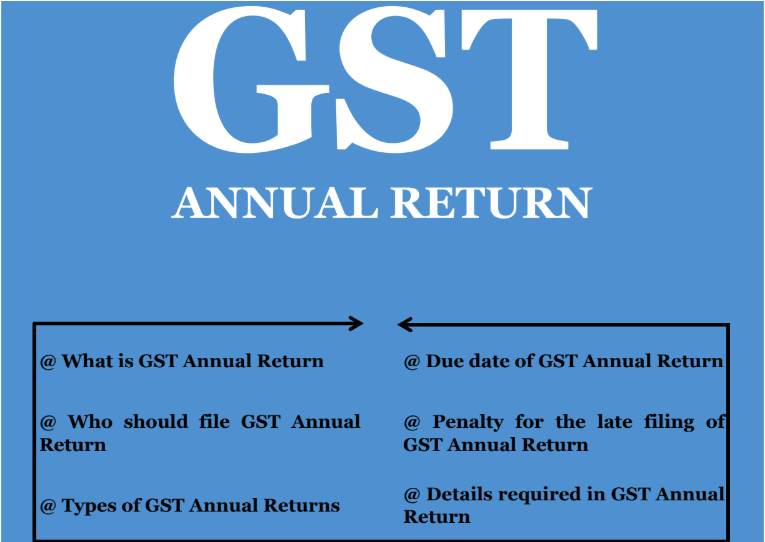Introduction
The Goods and Services Tax (GST) system in India has undergone significant transformations since its inception in 2017. As we enter the fiscal year 2025-26, the government has introduced several changes to the annual GST return filing process. This article aims to provide a detailed overview of these changes, their implications, and practical guidance for businesses to navigate the updated landscape effectively.
Definition of Annual GST Return Filing
Annual GST return filing is a consolidated summary of a taxpayer’s monthly or quarterly GST returns submitted throughout the financial year. This comprehensive return offers a holistic view of the taxpayer’s activities, including details of outward and inward supplies, tax liabilities, and input tax credits availed. The primary forms associated with annual GST returns are:
-
GSTR-9: Applicable to regular taxpayers.
-
GSTR-9A: Designed for composition scheme taxpayers (replaced by GSTR-4 from FY 2019-20 onwards).
-
GSTR-9B: Pertains to e-commerce operators collecting tax at source (TCS).
-
GSTR-9C: An audit form requiring self-certification for taxpayers with an aggregate turnover exceeding ₹5 crores in a financial year.
User Intent Behind Understanding GST Return Changes
Taxpayers and businesses seek information on the latest changes in GST return filing to ensure compliance, optimize tax planning, and avoid penalties. Staying updated helps in:
-
Ensuring Compliance: Adhering to the latest regulations to prevent legal repercussions.
-
Financial Planning: Accurately forecasting tax liabilities and managing cash flows.
-
Operational Efficiency: Streamlining internal processes to align with new filing requirements.
Benefits of the Recent Changes
The recent amendments aim to:
-
Simplify Compliance: By introducing automation and reducing manual interventions.
-
Enhance Transparency: Through real-time data processing and stricter reporting standards.
-
Support Small Businesses: By tailoring processes to reduce the compliance burden on SMEs.
Recent Changes in Annual GST Return Filing
1. Optional Filing for Businesses with Turnover up to ₹2 Crore
For the financial years from 2017-18 to 2023-24, businesses with an annual turnover up to ₹2 crore have the option to file GSTR-9 voluntarily. This measure aims to ease the compliance burden on small taxpayers. However, it’s advisable for such businesses to file the annual return to maintain comprehensive records and facilitate future assessments.
2. Revised Late Fee Structure
To encourage timely filing, a revised late fee structure has been implemented from FY 2022-23 onwards:
-
Turnover up to ₹5 Crore: Late fee of ₹50 per day (₹25 each under CGST and SGST Acts), capped at 0.04% of turnover in the state/UT.
-
Turnover between ₹5 Crore and ₹20 Crore: Late fee of ₹100 per day (₹50 each under CGST and SGST Acts), capped at 0.04% of turnover in the state/UT.
-
Turnover above ₹20 Crore: Late fee of ₹200 per day (₹100 each under CGST and SGST Acts), capped at 0.50% of turnover in the state/UT.
3. Integration of Artificial Intelligence (AI) and Automation
The GST filing process is set to integrate AI and automation to enhance accuracy and reduce human errors. Routine tasks such as data entry, invoice matching, and reconciliation are being automated, allowing businesses to file returns more efficiently and with greater precision.
4. Real-Time Data Processing
The GST system is transitioning towards real-time data processing, enabling businesses to submit data on an ongoing basis rather than waiting for monthly or quarterly submissions. This change facilitates instant access to updated tax credit balances and accelerates the reconciliation process.
5. Mandatory E-Invoicing for Small Businesses
Starting April 1, 2025, e-invoices must be uploaded to the Invoice Registration Portal (IRP) within 30 days of generation. This requirement aims to enhance transparency, curb tax evasion, and ensure timely compliance across businesses of all sizes.
6. Hard-Locking of Auto-Populated Values in GSTR-3B
Effective January 2025, the GST portal will restrict modifications to auto-populated values in the pre-filled GSTR-3B form. Tax liabilities derived from GSTR-1, GSTR-1A, or the Invoice Furnishing Facility (IFF), and Input Tax Credit (ITC) details from GSTR-2B, will be locked, preventing manual alterations. Taxpayers must ensure that any necessary corrections are made through GSTR-1A or the Invoice Management System (IMS) before filing GSTR-3B.
7. Three-Year Filing Limitation
A new limitation prohibits the filing of GST returns for periods older than three years from the due date. This applies to returns under Sections 37, 39, 44, and 52, including forms like GSTR-1, GSTR-3B, GSTR-4, GSTR-5, GSTR-5A, GSTR-6, GSTR-7, GSTR-8, and GSTR-9. Taxpayers are advised to reconcile and file any pending returns promptly to avoid losing the opportunity for late filings.
8. Revised Tax Audit Standards and Form 3CD Amendments
Effective April 1, 2025, India has introduced critical amendments to Form 3CD, a tax audit form. These changes mandate enhanced disclosures under updated tax audit regulations, impacting businesses and tax professionals. Key amendments include the introduction of Clause 44BBC, omission of specific deductions in Clause (19), and updates to reporting requirements for payments made to micro, small, and medium enterprises (MSMEs).
Application of the New Changes
To effectively adapt to these changes, businesses should:
-
Update Accounting Systems: Incorporate AI and automation tools to streamline data entry and reconciliation processes.
-
Train Personnel: Ensure that staff are well-versed with the new filing procedures and compliance requirements.
-
Engage Professionals: Consult with tax professionals to navigate complex amendments and optimize tax planning strategies.
Comparative Overview of Key Changes
| Aspect | Previous Provision | Revised Provision |
|---|---|---|
| GSTR-9 Filing for Turnover ≤ ₹2 Crore | Mandatory filing for all businesses. | Optional filing for businesses with turnover up to ₹2 crore from FY 2017-18 to 2023-24. |
| Late Fee Structure | Uniform late fee irrespective of turnover. | Tiered late fee based on turnover, with specific |
To visit https://www.gst.gov.in/
Contact: 8130555124, 8130045124
Whatsapp: https://wa.me/918130555124
Mail ID: operations@vibrantfinserv.com
Web Link: https://vibrantfinserv.com
FB Link: https://fb.me/vibrantfinserv
Insta Link: https://www.instagram.com/vibrantfinserv2/

